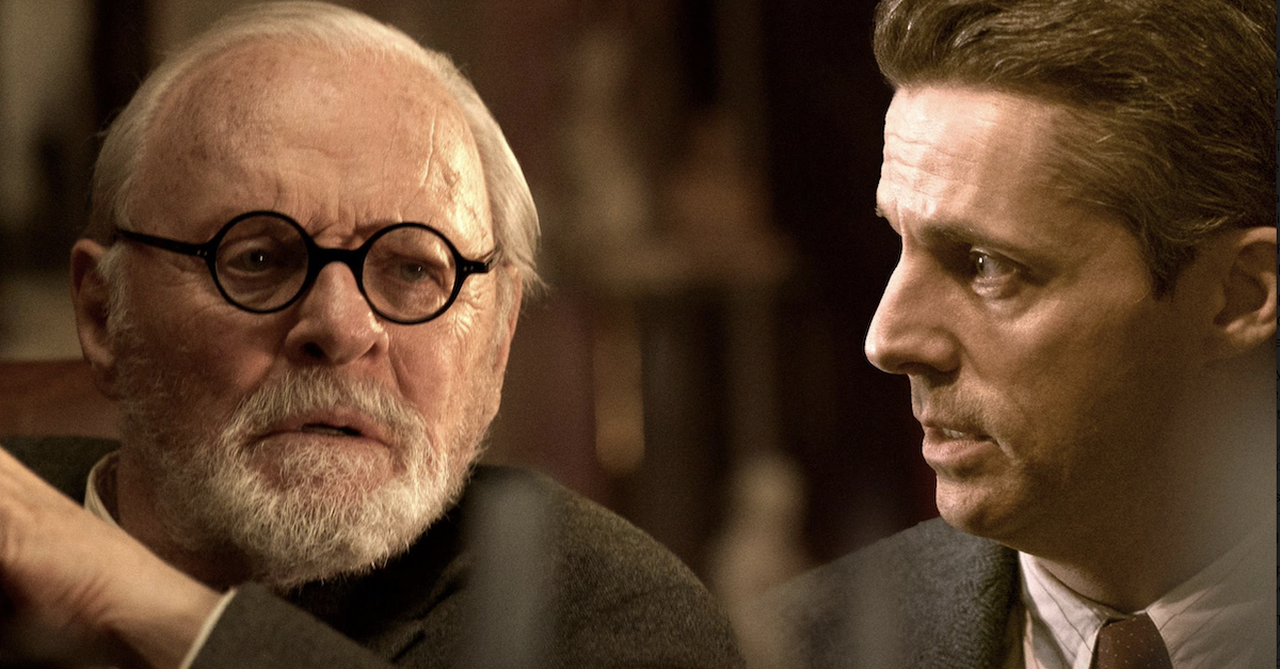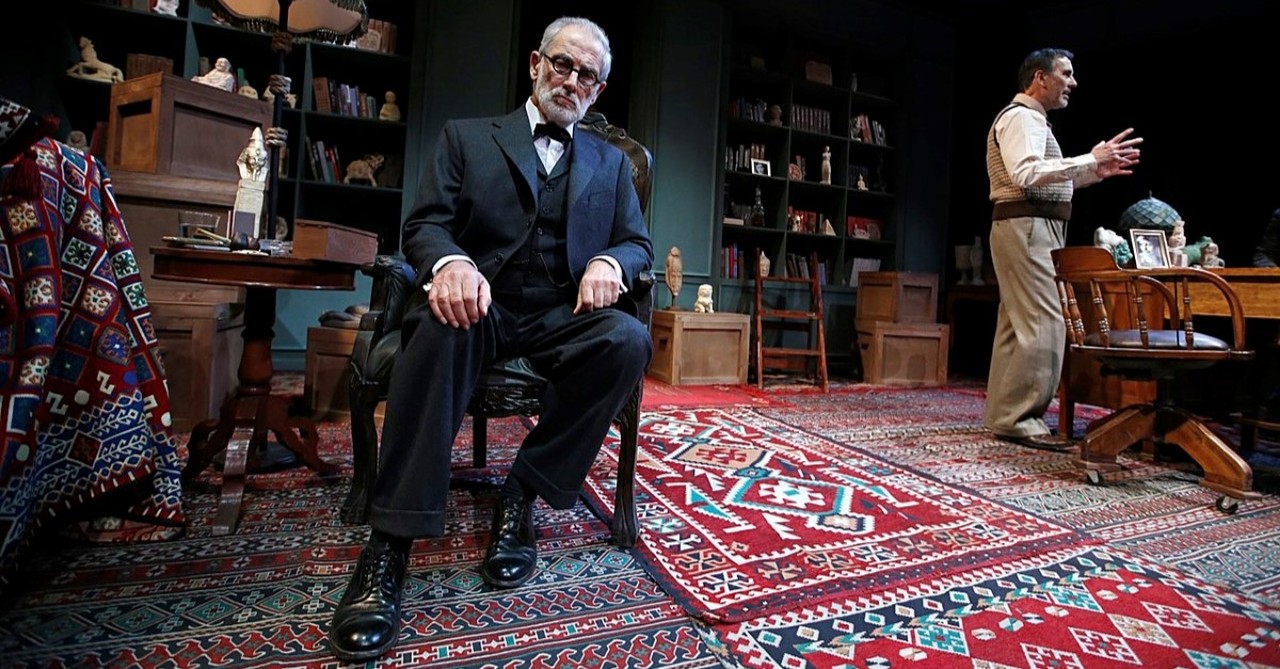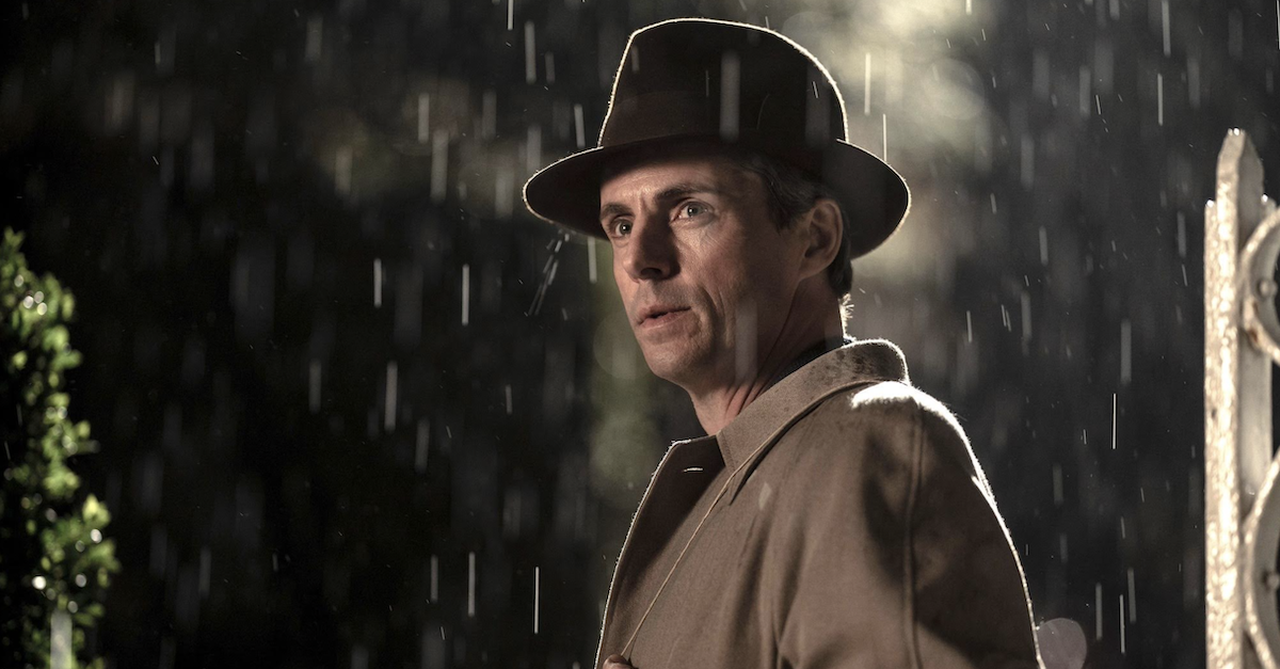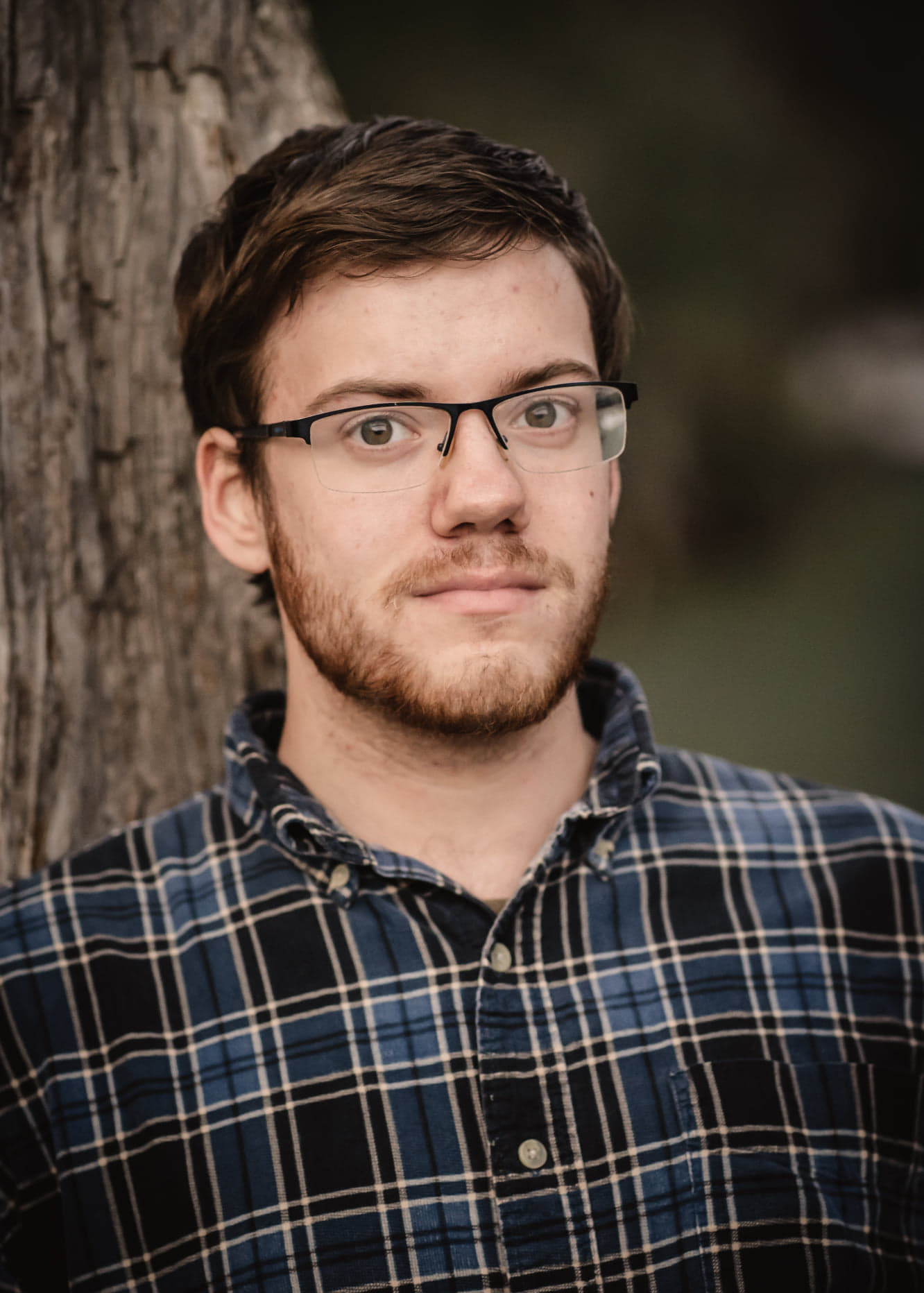
Freud’s Last Session, directed by Matthew Brown, has been getting intriguing reviews from Christian and secular publications alike. It depicts psychoanalyst Sigmund Freud meeting with Christian apologist C.S. Lewis in Oxford on September 3, 1939—the day that World War II began. The two men seem to have little in common, but their discussion about faith leads to intelligent questions many audiences can appreciate.
So, what should Christians know about the movie going in?
Photo Credit: ©Sony, Used with Permission
1. Did Freud and Lewis Know Each Other?

1. Did Freud and Lewis Know Each Other?
SLIDE 1 OF 10
Historians have not found clear evidence that Freud ever met with Lewis. However, that doesn’t mean it did not happen.
Freud spent most of his life in Vienna, Austria, but left in June 1938 to escape Nazi persecution. Because he was Jewish, his family had to rely on various bribes and favors from government officials to escape Austria. He lived in London until his death on September 23, 1939, three weeks after World War II started. As the movie’s credits point out, he met with an Oxford don during the weeks leading up to his death, although it’s unknown who he met with. He could well have met with Lewis.
The play and movie are built not only around the fact Freud and Lewis could have met but also around the fact they knew of each other’s work. Lewis responds to various Freudian theories in his fiction and essays. Armond Nicholi Jr. discusses how their ideas contrast in his 2003 book The Question of God, which inspired Mark St. Germain to write the 2009 play. The play’s strength is considering how Freud and Lewis would have interacted if they met since they had opposing ideas about religion. Freud held that religious faith is essentially an irrational response connected to compensating for childhood trauma. Lewis had been interested in Freud’s views when he was an atheist but rejected Freud’s secularism by 1931 when he became a Christian.
Photo credit: ©Sony; used with permission.
2. How Much Is Freud’s Last Session Like the Play?

2. How Much Is Freud’s Last Session Like the Play?
SLIDE 2 OF 10
Mark St. Germain’s play appeared in 2009 and is a two-actor story. It has been performed many times in many countries (such as the 2019 Chilean production, pictured above). The action occurs in Freud’s home, with Lewis visiting to discuss religion. Several times, effects like the radio giving updates as news arrives about Germany invading Poland imply what is happening outside the stage. Several times, Freud calls his daughter, psychoanalyst Anna Freud, on the phone and refers to their close relationship.
The movie, co-written by St. Germain with director Matthew Brown, opens the play up in various ways. Anna Freud plays a more prominent role in the story—including discussions about her struggles to relate to him since they work in the same field. There are also various flashbacks to Lewis’ life leading up to 1939—pub conversations with the Inklings, his World War I experiences, and his complex relationship with Mrs. Janie Moore.
Photo Credit: Flickr/Pontificia Universidad Católica de Chile
3. What Does Freud’s Last Session Tell Us about Lewis’ Spiritual Life?

3. What Does Freud’s Last Session Tell Us about Lewis’ Spiritual Life?
SLIDE 3 OF 10
While the plot is set in 1939, the two characters’ conversation features them discussing their past. Lewis discusses many details in his other famous books, including Surprised by Joy.
Surprised by Joy, published in 1955, was Lewis’ description of his journey from Christianity to secularism and back again. He describes a key factor as his craving for joy (or sehnsucht, a German word for joy involving deep longing). The search for joy ultimately leads him to believe that there is some divine source behind this longing—a divine source searching for him and must be God.
Photo Credit: ©Sony; used with permission.
4. Did C.S. Lewis and Sigmund Freud Have Other Connections?

4. Did C.S. Lewis and Sigmund Freud Have Other Connections?
SLIDE 4 OF 10
While scholars have not yet found clear evidence that Lewis and Freud met each other, there is a curious background connection.
Since Freud’s Last Session uses the coming World War II as a backdrop, it mentions children being evacuated from London into the countryside to avoid air raids. Fans of the Chronicles of Narnia will know that Lewis housed several schoolchildren who had been evacuated. Lewis used the situation (child evacuees staying with a professor in the country) as material for The Lion, The Witch and the Wardrobe.
One of those children was June Flewett. Lewis and his brother, Warnie, both befriended her. Lewis wrote to her mother, “I have never really met anything like her unselfishness and patience and kindness.” Flewett may have inspired Lucy (along with other children, such as Lewis’ goddaughter Lucy Barfield).
According to David Beckman, Flewett stayed in contact with Lewis for the rest of his life. She grew up to become a stage actress, using the name Jill Raymond. In 1950, she married Freud’s grandson, Clement. She became known as Lady Freud in 1987 when Clement received a knighthood.
Photo Credit: © Getty Images/fcscafeine
5. Which C.S. Lewis Book Features in Freud’s Last Session?

5. Which C.S. Lewis Book Features in Freud’s Last Session?
SLIDE 5 OF 10
Early in the play and movie, Lewis refers to a book that he assumes led Freud to want to see him: his 1933 novel The Pilgrim’s Regress.
The novel is an allegory that deliberately imitates John Bunyan’s classic The Pilgrim’s Progress. However, while Bunyan’s hero journeys from sin (the City of Destruction) to salvation (the Celestial City), Lewis’ hero finds that the home he was seeking (the Island) is part of the place he left (Puritiania, ruled by the Landlord). The actions symbolize Lewis’ spiritual journey—returning to Christianity after years of being an atheist or an agnostic. Lewis’s hero meets various characters who represent different worldviews he tries. One character, Sigismund Enlightenment, symbolizes Freudian views.
Hence, the play and movie use The Pilgrim’s Regress to kickstart the plot—Lewis worries that Freud was offended at being caricatured and has asked to meet him to respond to Lewis’ criticisms. This comment leads Freud to explain his beliefs, leading to the two characters’ discussion.
While the movie gives the impression that Lewis had already become known as a Christian apologist, The Pilgrim’s Regress was just the start. The next year, Lewis published The Problem of Pain, his first nonfiction book exploring Christian apologetics. BBC radio producer James Welch read the book and decided to offer Lewis a chance to give radio talks about faith. These talks became the basis for Lewis’ classic book Mere Christianity. Lewis spent much of World War II writing articles and giving sermons that defended and promoted Christianity.
Photo Credit: ©Unsplash/Hush Naidoo
6. Do the Inklings Appear in Freud’s Last Session?

6. Do the Inklings Appear in Freud’s Last Session?
SLIDE 6 OF 10
While the movie is primarily about Freud and Lewis discussing their views, it features the Inklings talking about their writings. J.R.R. Tolkien and Warnie Lewis appear, as does Lewis’ colleague T.D. Weldon. While Weldon was not a member of the Inklings, he knew Lewis and often exchanged views on books and literature.
By 1939, the Inklings were entering their prime period as a group. Some members, like Charles Williams, had yet to arrive, but the other core members (Lewis, Tolkien, and Owen Barfield) had assembled. They shared some of their best work throughout the war: Tolkien read from The Lord of the Rings, and Lewis shared his science fiction stories and apologetics.
Photo Credit: © GettyImages/Dina-Saeed
7. How Important Is World War II to Freud’s Last Session?

7. How Important Is World War II to Freud’s Last Session?
SLIDE 7 OF 10
World War II provides an important backdrop to the play, not just because it brought Freud to England. Much of the play’s conflict comes from the fact that Freud and Lewis are discussing how to believe in God in the face of great evil—a pressing question in 1939, as Hitler’s armies threatened Europe.
The movie expands on the World War II themes and uses it to underline a particularly important point: Freud was a Jewish man who had given up on religion, perhaps because of the anti-Semitism he experienced growing up. The question of how to believe in God when Jewish people have experienced centuries of persecution (often from people claiming to follow Christ) is deeply important to the conversation Lewis has with Freud. It’s also very topical since Freud and his family have come to England to escape the Nazis.
The movie uses this element to highlight that conversations about God, evil, suffering, hope, and faith have consequences. As serious as those consequences are, this is no excuse to be rude when discussing these ideas with people: people have dear and often understandable reasons for their positions. Perhaps the most interesting lesson from Freud’s Last Session is how people can respect each other and discuss their opposing views, not feeling threatened by their disagreements.
Photo Credit: ©GettyImages/Zeferli
8. Who Is Mrs. Moore in Freud’s Last Session?

8. Who Is Mrs. Moore in Freud’s Last Session?
SLIDE 8 OF 10
Some viewers unfamiliar with Lewis’ life may be surprised by a particular character: Janie Moore, a woman who lives with Lewis. The movie implies but leaves it unclear whether there is something romantic about their relationship.
The movie draws on what is known about Janie Moore: her son, Paddy, met Lewis when they were both soldiers in World War I. Concerned about what would happen to their families (Paddy’s father had deserted the family some years earlier), the two men agreed to care for each other’s parents if the other didn’t survive. Paddy died in 1918. Janie and her 13-year-old daughter, Maureen, shared a home with Lewis when he returned to Oxford that year. Lewis continued to care for Janie Moore until she died in 1951.
Lewis referred to Janie Moore as his mother in various letters, which led most scholars to assume she became a foster mother figure (Lewis’ mother, Flora, died when he was nine). However, other scholars noted that Lewis didn’t become a Christian until the early 1930s, and he was somewhat secretive about Janie Moore in letters he wrote to his father during the 1910s-1920s. So, many have wondered if something more illicit was going on, at least before Lewis returned to faith.
Lewis’ secretary, Walter Hooper, stated in an interview published after his 2020 death that he had found evidence of a romance with Janie Moore that ended after Lewis became a Christian. Some have suggested this shows how Liew and his friends were more complicated than we assume. Trevin Wax has suggested that the most intriguing part may be that Lewis continued caring for Mrs. Moore after their relationship became platonic, even as her physical health declined. Ultimately, the complicated relationship became a sanctifying process, pushing Lewis to serve someone else.
Photo Credit: © GettyImages/Paolo Gagliardi
9. Movies to Watch After Freud’s Last Session

9. Movies to Watch After Freud’s Last Session
SLIDE 9 OF 10
While Freud’s Last Session provides an interesting look at Lewis and the Inklings, it is not the only movie to explore their lives and legacies.
Shadowlands depicts Lewis’ late-in-life marriage to American writer Joy Davidman. The story is available as a play, a 1985 TV movie, and a 1993 movie. The 1993 movie, directed by Richard Attenborough, features Hopkins playing Lewis.
The Most Reluctant Convert, directed by Norman Stone, is based on a one-person play by Max McLean and provides an overview of Lewis’ spiritual journey.
As of this writing, plans are in place for several sequels to The Most Reluctant Convert, depicting Lewis’s life after his conversion.
The Fantasy Makers, a documentary directed by Andrew Wall, looks at how Lewis and Tolkien (along with their influence, George MacDonald) integrated their faith with their fantasy writings.
Photo Credit: ©Denise Jans/Unsplash
10. Plays to Watch After Freud’s Last Session

10. Plays to Watch After Freud’s Last Session
SLIDE 10 OF 10
Freud’s Last Sesson is well worth seeing in its original play form. Various other plays about Lewis or the Inklings are available to see in various places throughout the year.
Max McLean’s theatre company Fellowship for the Performing Arts performs The Most Reluctant Convert and sequel plays, as well as plays based on Lewis’ books The Screwtape Letters and The Great Divorce.
Anthony Lawton has written (and performs in) one-actor plays based on The Great Divorce and The Screwtape Letters.
It’s also worth looking at some of Mark St. Germain’s other work, which sometimes considers related themes. The Book of the Dun Cow is based on a Christian fantasy novel by Walter Wangerin Jr. and gives a compelling look at the spiritual battle between good and evil. The Best of Enemies plays with a more intense version of the “two people with opposing ideas meet” concept: a Klux Klux Klan leader and a Civil Rights activist interacting during a school crisis.
Photo Credit: ©Rob Laughter/Unsplash

Originally published January 19, 2024.







